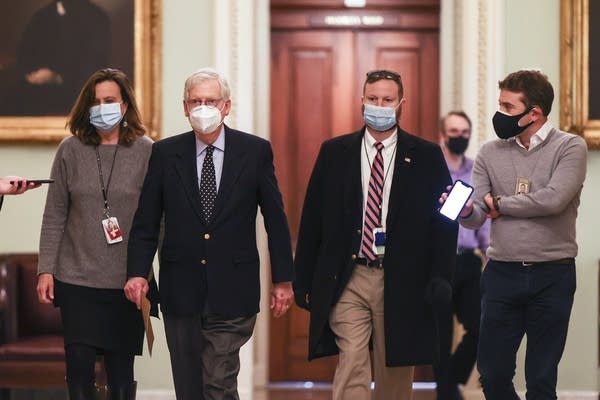What’s in the new pandemic relief bill?

U.S. Senate Majority Leader Mitch McConnell, R-KY, heads to the Senate floor on Capitol Hill on December 29, 2020 in Washington, D.C.
Tasos Katopodis | Getty Images
Go Deeper.
Create an account or log in to save stories.
Like this?
Thanks for liking this story! We have added it to a list of your favorite stories.


